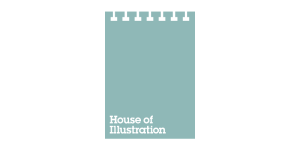The fourth Romantic Illustration Network symposium took place at the House of Illustration on Saturday the 6th of June. Once again the event was well-attended with a friendly mix of regulars and new faces, local and international.
We had two inter-related themes for the symposium:
1.Miniaturization: Drawing on Peter Otto’s work on virtual culture in the Romantic period, is the illustration a form of virtual gallery? How does visual meaning change when an image is resized?
2.The Art of Quotation: How were literary quotations used to conceptualise visual images? How important are framing devices to the meaning of an image?
However, speakers were free to interpret the terms ‘quotation’ and ‘miniaturised gallery’ in any way they saw fit, and to raise any other questions they chose.
We kicked off with David Worrall (Roehampton/Nottingham Trent) who presented us with his concept of ‘locations of curation’. After crediting William St Clair in RIN 3 for inspiring his quest for a new theory of illustration, Worrall explored what he described as two currently disconnected narratives – Romanticism and eighteenth-century theatre – to consider the changing moments when images interact with other objects, such as the people who view them. He used the example of theatrical portraits to demonstrate how images moved from stage, to page, to prints, to household objects.
Susan Matthews’s (Roehampton) paper interrogated questions of scale, domesticity, and artistic encounter, the idea of ‘meeting’ an artist though their illustrations. She pointed out that the name ‘House of Illustration’ (as opposed to ‘Gallery of Illustration’) is significant: we often seem to want to give illustration a ‘home’. She focused on Fuseli’s illustrations to an edition of Cowper’s popular poem The Task (1785), and revealed the awkward tensions between Fuseli’s depictions of domestic scenes and Cowper’s lines, whilst also showing that Fuseli could produce powerful images on a small scale when he really wanted to. Matthews drew parallels between Fuseli’s techniques and the recent exhibition of Paula Rego’s work at House of Illustration.

Plate 17, The Book of Urizen William Blake Archive
From here we zoomed in still further, with Peter Otto’s (Melbourne) paper on plate 17 of Blake’s The Book of Urizen (1794). Otto gave a detailed and original reading of the plate which encompassed The Terror and images of decapitation by guillotine, the story of Adam and Eve, Perseus and the Gorgon, and the Narcissus myth to show how the plate connects primal history with events unfolding in the present through an art of visual and textual quotation. He argued that the plate illustrated a turning point in society, represented as a decapitation, and that Blake was constructing an imagined reality through quotation which in turn tries to shape or frame what reality is.
From royal executions to royal collections, Kate Heard (Royal Collection) showed us how George III and George IV both engaged with the reproductive print market, albeit in very different ways, as prints enabled middle-class consumers to gain access to items in the Royal Collection. We saw how Royal Collection items circulated as prints, so much so that satirical caricaturists could imitate them, and she argued that the print market played a crucial role in the public sense of the King. We also saw what a fantastic resource the Collection is for scholars.
Taking us through to the Victorian period, Bethan Stevens (Sussex) spoke about her work on the albums of proofs put together by the dominant mid-century London wood-engraving firm, the Dalziel family. The firm of Dalziel produced the illustrations to a vast range of literary and non-literary texts, including such classics as the Alice books and Tennyson’s Idylls of the King. Stephens showed how, in the albums, the exclusion of words affects the status, form and narrative of illustration, and provokes a new attention to illustrations as images which enables all kinds of subversive and intriguing readings.
Three Bibliographical Society Studentships were awarded: Anne Musset (Warwick/Paris-Diderot), Tessa Kilgariff (National Portrait Gallery/Bristol), and Naomi Billingsley (Manchester). We ended the day, as usual, with a period of open discussion about the broader themes of the event and the future of the network (upcoming ventures include the panel at BARS 2015 in Cardiff and the digitised Shakespeare Gallery, currently under construction). After that we adjourned to the pub, to round off a successful and fun day with a friendly drink.
Details of the BARS panel will be appearing on the blog and website soon: we hope to see you there!















